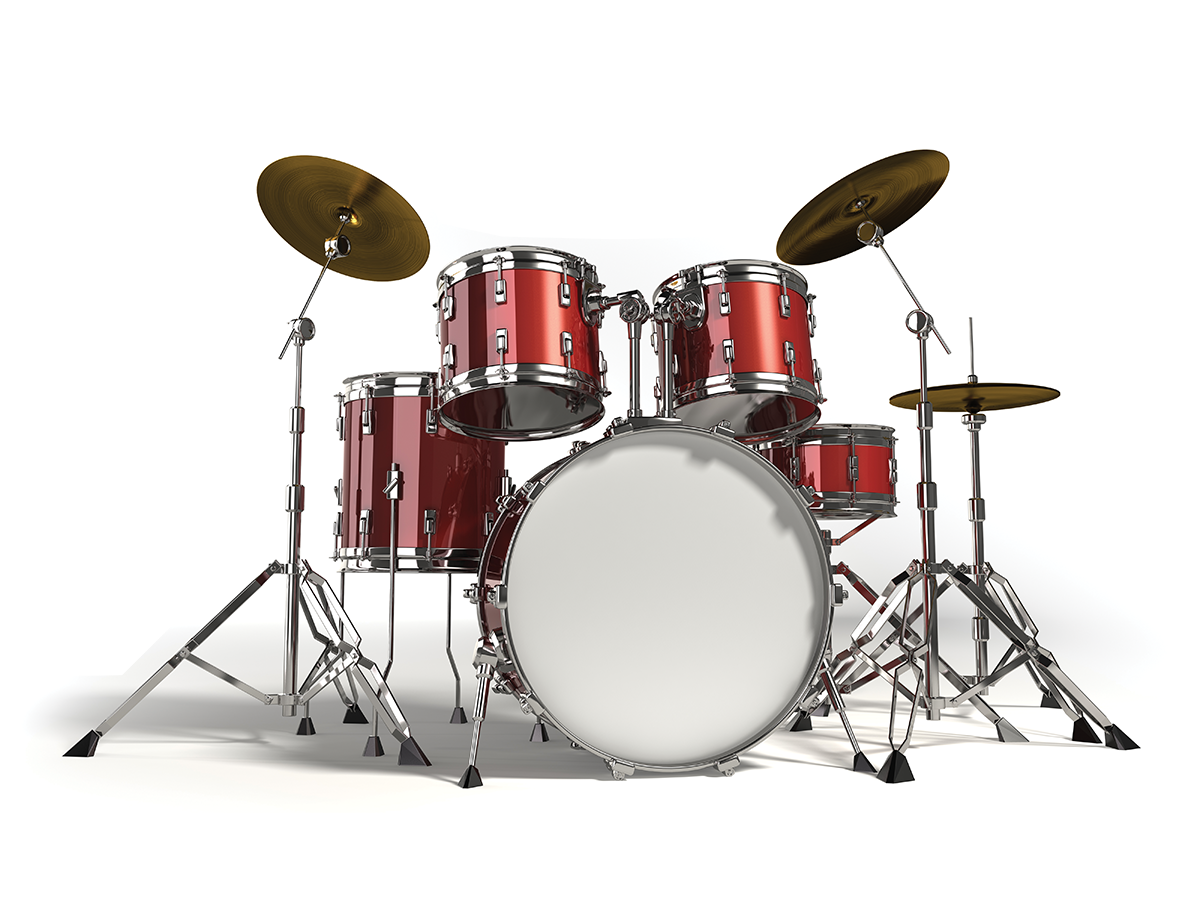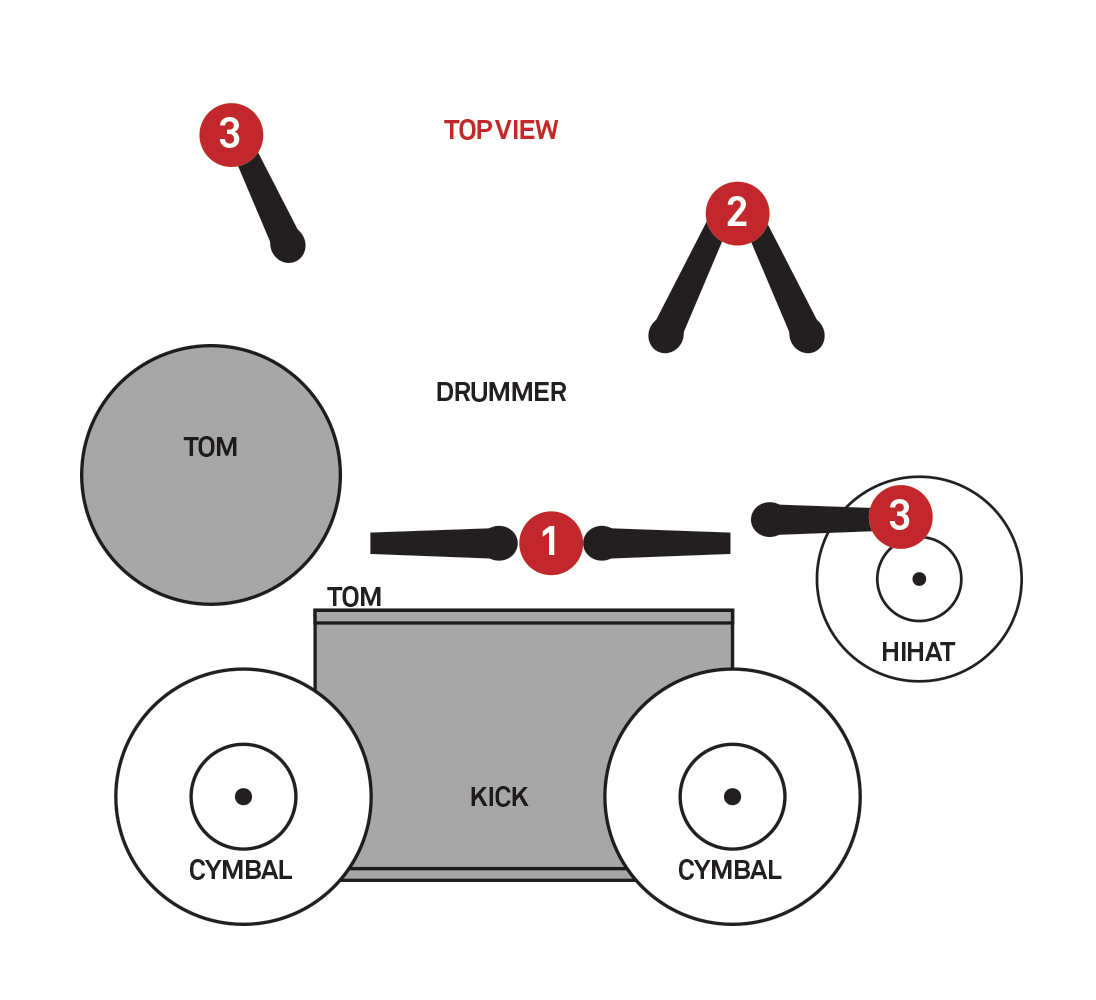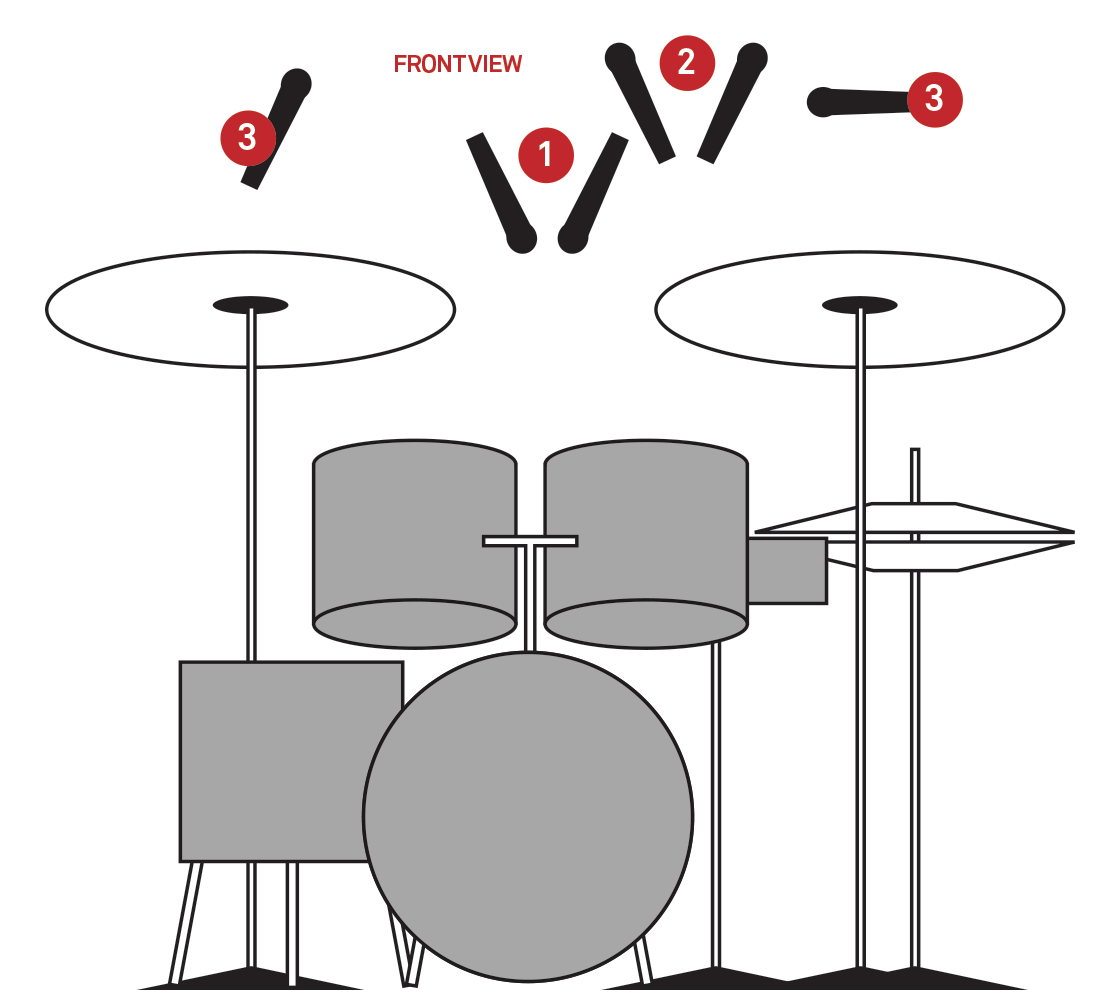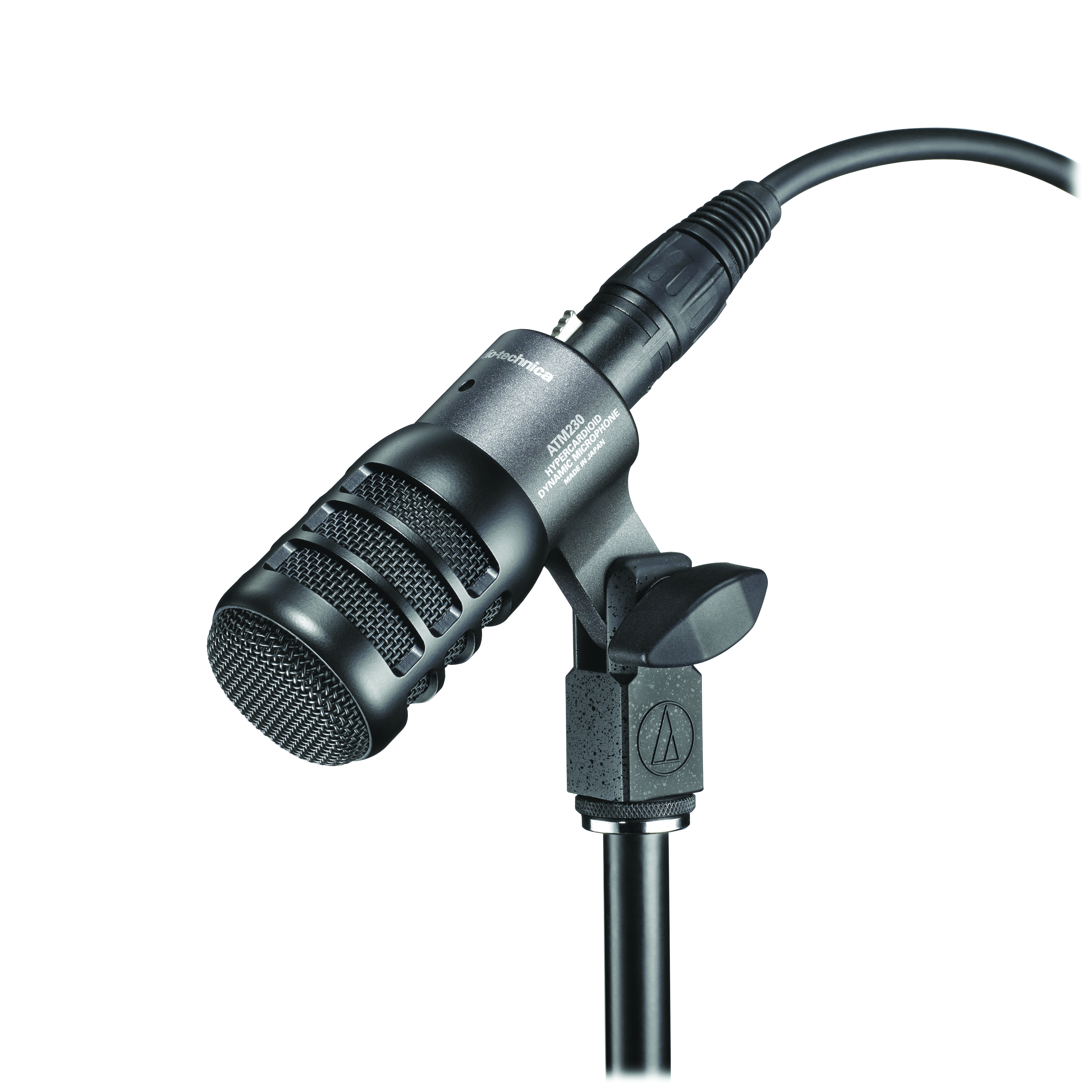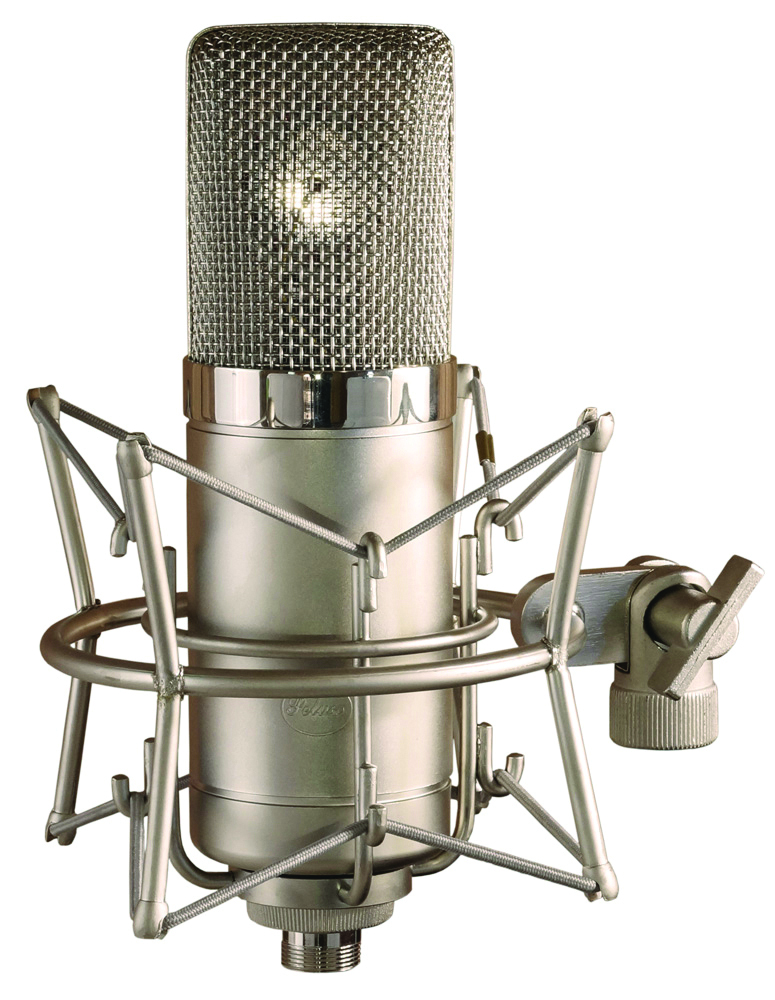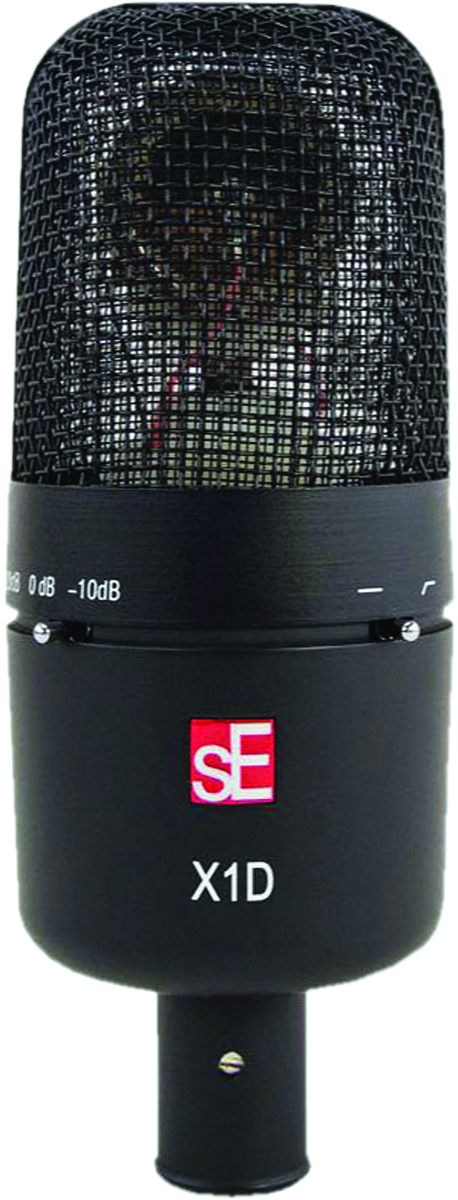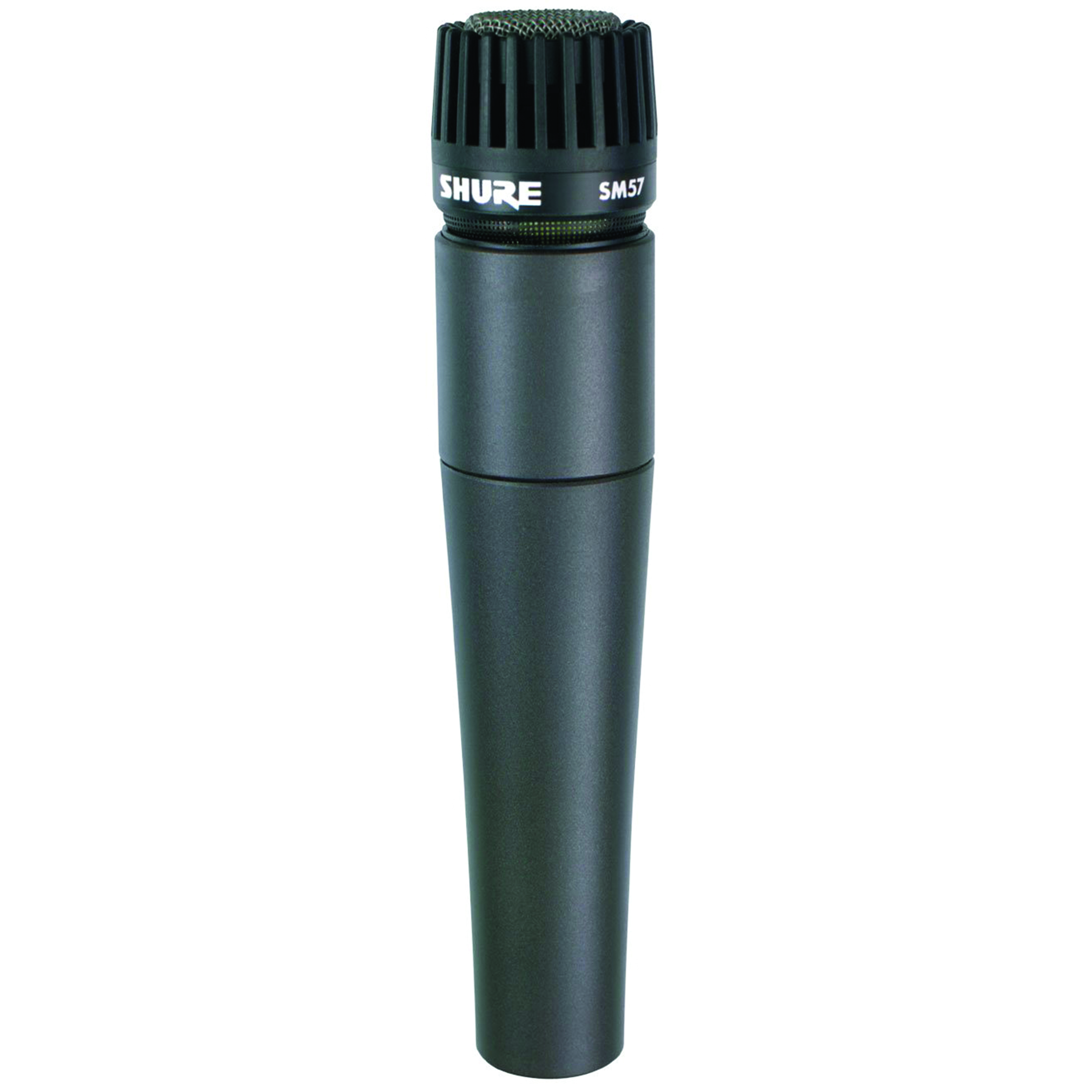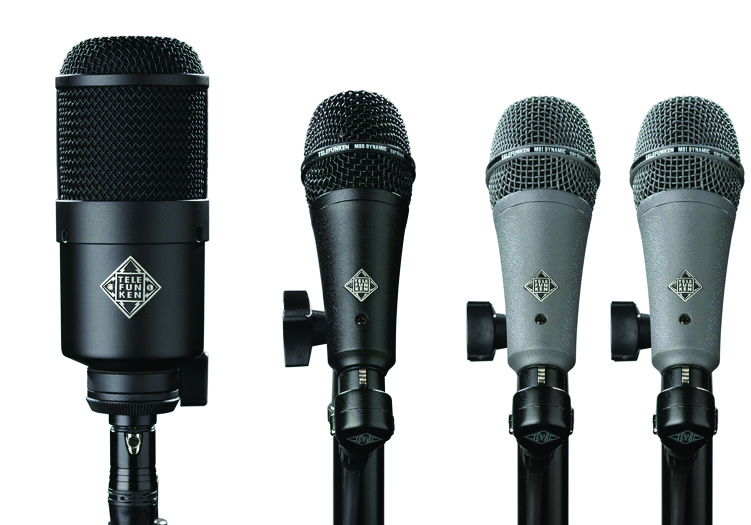The Ultimate Guide To Recording Everything – Drums
So how complex is recording a drum kit going to be, when we’ve already said that there are all sorts of different microphone placements and choices for something as simple as an acoustic guitar? Well, the answer is ‘very’, but also ‘easy’, as we have a couple of very simple solutions, one of which is […]
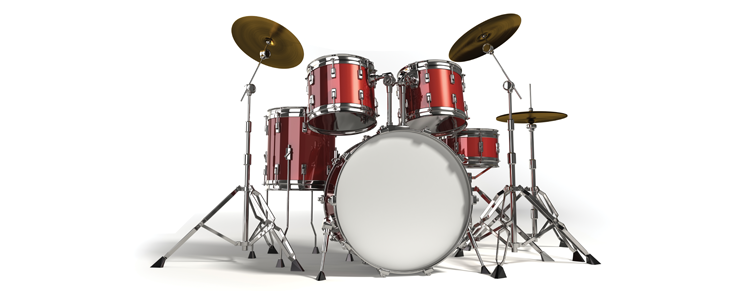
So how complex is recording a drum kit going to be, when we’ve already said that there are all sorts of different microphone placements and choices for something as simple as an acoustic guitar? Well, the answer is ‘very’, but also ‘easy’, as we have a couple of very simple solutions, one of which is recommended by MusicTech-featured producer, Bob Clearmountain.
Drum recording methods: one to two microphones
Microphone types Large-diaphragm condensers and dynamics, all cardioids
You can mic a drum kit up with just one microphone. It won’t sound perfect, but if you are limited, the simplest way is using either a single overhead microphone – a good-quality cardioid condenser – or one mic set a distance away in front of the kit to capture the entire setup and the room ambience. Obviously, the results depend very much on the room and the quality of the mic, but you can get a good mix of ambience and kit – indeed, some would say have this ‘room’ mic set up anyway, to record everything together, as it can be mixed in later.
We featured Bob Clearmountain in the magazine a couple of years ago – this legendary producer has worked with everyone from Tina Turner to Elton John. He has a surefire, quick-and-easy way to record a drum kit with just two mics.
You place one, in his case a Shure Beta 52 dynamic, in front of the kick – or where you can (if there is a hole), inside the kick to avoid recording the air rumble from the drum surface itself. The other microphone, a good condenser like a Neumann M 49 with a cardioid pattern pointing down, is placed as an overhead to the kit and fairly centrally over the snare and toms.
Mike Hillier also details some of the other common two-microphone techniques in his From Recording To Release series at www.musictech.net, where he covers spaced and coincident pairs of overheads, and the ORTF, Recorderman and Glyn Johns techniques, which all demand fairly specific mics and placement.
Then there’s the X-Y technique, similar to that used on acoustic guitar, which eliminates any phasing issues. All these techniques will suit; but the ones illustrated over the page will get you there even easier.
Drum recording method: three-plus microphones
Microphone types Large-diaphragm condensers and dynamics, all cardioids
The flexibility of what you can mix with can be increased, simply by adding microphones to different parts of the kit.
So with three mics, you could add a snare microphone to the Clearmountain kick and overhead combo. Then you can add a fourth to the hi-hat and a fifth to the toms, and keep going until you run out of individual drums or mics. Some engineers also favour adding another mic to the outside of the kick drum, while leaving one on the inside, too.
So what about the actual placement and types of all of these microphones? For the big, deep and midrange sounds of the kick, snare and tom, you should, more often than not, choose dynamic microphones with their cardioid or super-cardioid patterns. For hats and cymbals, use small-diaphragm condensers instead.
In terms of placement, as we’ve seen with the kick, a mic can be placed inside to get more of the drum body sound. It can be placed a few inches outside, for a boomier sound. For snare drums, go close – maybe two inches away – and point the mic directly at the head, as you want quite an isolated sound. For toms, you’ll want to go a bit further out – up to four to six inches – to lessen bass and get more of a midrange balance.
With just one mic, place it exactly between two toms. For both toms and snares, place the drums at the rim or one to two inches in from it. With sharper, crisper hats, use small-diaphragm condensers, four inches away, pointing down, or try eight inches from the edge, pointing at the bell. For cymbals, it’s the same kind of small-diaphragm condenser, placed six inches above and pointing down.
Drum-microphones recommendations
Audio-Technica ATM230
Price £140
Designed for toms and does a great job.
Lewitt LCT 640
Price £879
A great all-round mic that’s flexible enough for a variety of studio tasks.
Peluso P-49
Price £1,499
A great-quality condenser for capturing the kit from above.
sE Electronics SX1D
Price £199
A large-diaphragm condenser designed for percussion.
Sennheiser MK 8
Price £690
This microphone can turn its hand to pretty much anything, so could quite easily be an overhead choice.
Shure SM57
Price £92
They say: “The legendary SM57 is an industry-standard, versatile cardioid dynamic microphone tuned for clean reproduction of amplified and acoustic instruments.” We agree.
Telefunken DD4
Price £1,010
Four dynamic microphones tuned specifically for drums.
Other recommendations
AKG C414
Price £815
Use as a pair for overheads.
Neumann TLM 49 (overhead)
Price £1,250
Use as a single overhead, or pair to capture the main kit.
Sennheiser MD 421
Price £339
Famed for being very versatile, this is great for snares and toms.
Sennheiser E600
Price £839
A complete kit, ready to tend to all your drum-mic needs.
Shure Beta 52A
Price £148
A great, dedicated microphone for your kick recording.
Shure Beta 91A
Price £255
And another great microphone for your kick recording.
Shure Beta 181
Price £399
A great hi-hat and overhead microphone.
